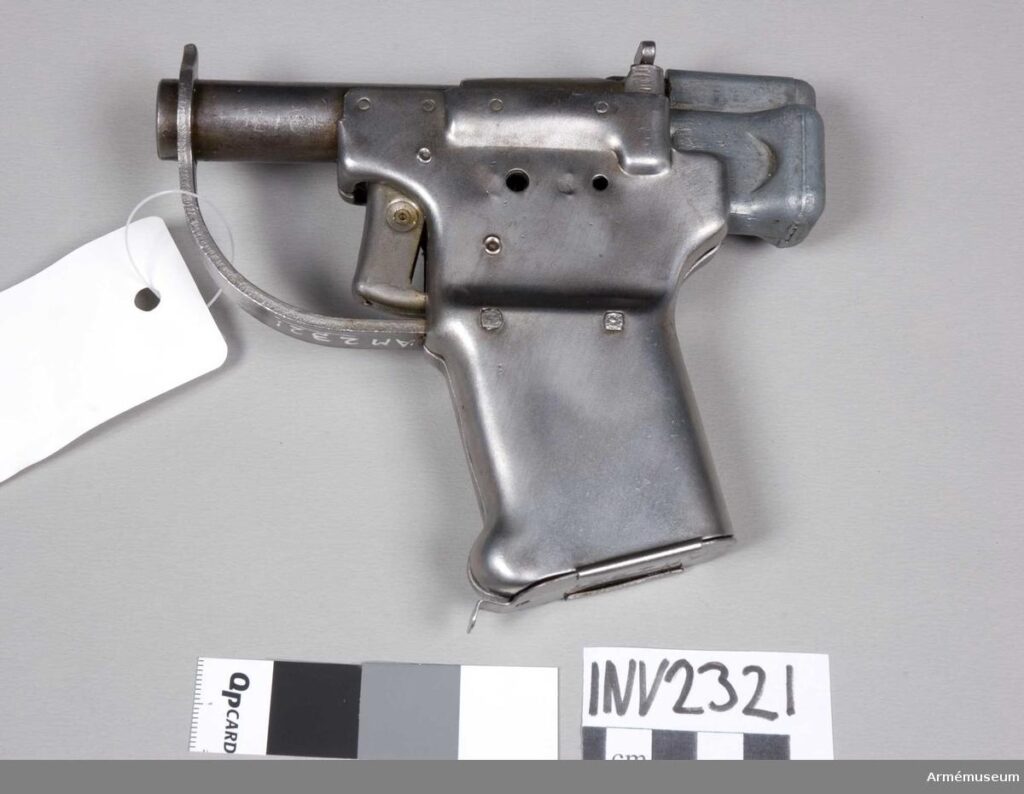During World War II, amidst the chaos and destruction of battle, a seemingly unassuming weapon emerged as a vital tool for resistance fighters and soldiers alike. The FP-45 Liberator Pistol, known as WWII’s cheapest weapon, played a unique role in the war, its simple design and affordability making it a valuable asset for those fighting against tyranny. Let’s delve into the fascinating story behind this unassuming yet powerful firearm and uncover its impact on the course of history.
- The Revolutionary Design of the FP-45 Liberator Pistol
The FP-45 Liberator Pistol was a truly revolutionary design during World War II, known for being one of the cheapest weapons ever produced for military use. This single-shot pistol was intended to be a disposable firearm for resistance fighters and guerrilla forces, providing a means of arming themselves quickly and effectively against enemy forces.
The simplicity of the FP-45 Liberator Pistol’s design was its key feature, with minimal moving parts and a crude yet functional construction. The pistol was made primarily from stamped metal parts, making it easy and cost-effective to mass-produce. Its compact size and lightweight nature made it easy to conceal and carry, allowing for covert operations and surprise attacks. Despite its basic design, the FP-45 Liberator Pistol served as a symbol of resistance and defiance during one of the darkest periods of human history.
– Manufacturing and Distribution of the Most Economical WWII Weapon
The FP-45 Liberator pistol was a simple and cost-effective weapon manufactured during World War II, designed for distribution to resistance fighters behind enemy lines. Despite its crude construction, this single-shot pistol played a crucial role in supplying forces with a reliable firearm for self-defense and covert operations.
Constructed from stamped metal parts and produced at a fraction of the cost compared to other firearms of the time, the Liberator was a remarkable feat of engineering for its purpose. Its compact size and lightweight design made it easy to conceal and distribute in large quantities, earning it the reputation as one of the most economical weapons of World War II.
– Impact and Legacy of the FP-45 Liberator Pistol in WWII Operations
The FP-45 Liberator pistol was a simple and cost-effective firearm designed by the United States military during World War II. Produced for the Office of Strategic Services (OSS), the Liberator was intended to be a disposable weapon distributed to resistance fighters in occupied territories. Despite its basic design and lack of accuracy, the FP-45 served a vital purpose in covert operations during the war.
One of the most significant impacts of the FP-45 Liberator pistol was its ability to provide a clandestine means of arming resistance forces in Nazi-occupied territories. The small size and lightweight nature of the pistol made it easy to conceal and distribute to underground operatives. The simplicity of the design allowed for mass production at a fraction of the cost of traditional firearms, making it an affordable option for arming resistance fighters. While the Liberator may not have been a powerful or accurate weapon, its legacy lives on as a symbol of ingenuity and resourcefulness in the fight against tyranny.
Key Takeaways
the FP-45 Liberator pistol stands as a testament to the ingenuity and resourcefulness born out of the dire circumstances of WWII. Despite its simplicity and low cost, this unassuming weapon played a crucial role in arming resistance fighters and disrupting enemy forces. Its legacy serves as a reminder of the significant impact that even the humblest of weapons can have on history. So, the next time you come across a piece of seemingly insignificant history, remember that it may hold within it a story of courage, resilience, and innovation.


